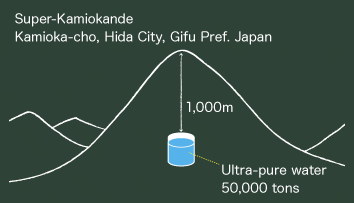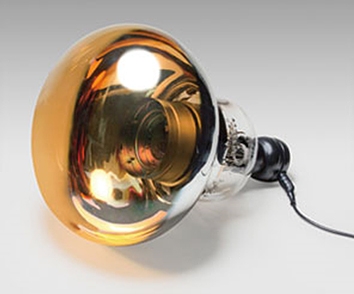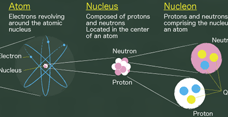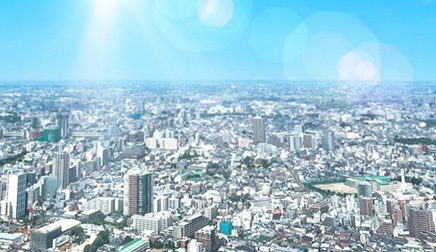- Written by
-
Shinji OHSUKACentral Research Laboratory, Hamamatsu Photonics K.K.
Specialized field : Light measurement(photon counting), Radiation measurement, Mathematical statistics.
Neutrinos – “Ghostly Particles?”
This time, I’m writing about elementary particles called neutrinos which are also referred to as "ghostly particles" because they are very elusive particles. Neutrinos belong to the lepton group of elementary particles that make up matter. There are 3 types of neutrinos: electron neutrinos, muon neutrinos, and tau neutrinos. (The lepton group also includes electrons, muons, and tau particles, so there are a total of 6 types of leptons. By the way, another group of elementary particles called “quarks” also includes 6 types of particles.)

The existence of neutrinos was first proposed by Wolfgang Pauli in 1930 to explain the conservation of energy in beta decay of an atomic nucleus. The name neutrino was coined by the Italian physicist Enrico Fermi. Neutrinos are electrically neutral and their mass was thought to be either extremely small or zero. Neutrinos rarely interact with other matter and the first detection of neutrinos was reported in 1956 by the American physicists Fredrick Reines and Clyde Cowan. By that time nearly a quarter of a century had passed since the existence of neutrinos was first proposed by Pauli.
In the Reines and Cowan experiment, neutrinos emitted from a nuclear reactor were detected. Since then, great strides have been made in technology for observing neutrinos. These advances allow conducting experiments to observe neutrinos coming from other sources besides nuclear reactors, such as neutrinos produced in the center of the sun (solar neutrinos), neutrinos released by a supernova explosion (supernova neutrinos), neutrinos produced in the atmosphere by nuclear reactions caused by cosmic rays coming from outside the solar system (atmospheric neutrinos), neutrinos accompanying the decay of radioactive elements inside the Earth, and accelerator neutrinos generated in a high energy accelerator. Among all of these, the number of solar neutrinos showering down on the Earth within one square centimeter is said to be more than 60 billion per second but we never see or sense those neutrinos in any way.
Various materials are utilized to catch neutrinos in experiments aimed at detecting and observing them. For example, in the Raymond Davis’s experiment in the United States that began in the late 1960’s for observing solar neutrinos, more than 600 tons of liquid called tetrachloroethylene containing chlorine were used to catch neutrinos. The Super-Kamiokande experiment in Japan utilizes 50,000 tons of ultra-pure water (very clean water with almost all impurities removed) and the SNO (Sudbury Neutrino Observatory) in Canada utilizes 1,000 tons of heavy water. Heavy water is a form of water in which two hydrogen atoms of each water molecule are replaced by the deuterium isotope of hydrogen whose nucleus consists of a proton and a neutron.
What all of these neutrino detection experiments have in common is that a massive amount of materials were prepared in order to catch the neutrinos. The experimental facilities were also built deep underground in order to avoid detecting cosmic-ray muons that prevent correctly detecting neutrinos. In fact, the apparatus for the Davis’s experiment was installed 1,500 meters underground in a former gold mine, Super-Kamiokande was constructed 1,000 meters underground in the former Kamioka-mine, and the SNO 2,000 meters underground in an old nickel mine.
Super-Kamiokande experiment
Now let’s take a look at the Super-Kamiokande experiment being conducted in Japan for detecting and revealing the properties of neutrinos. The Super-Kamiokande experiment utilizes a huge cylindrical tank with a height and diameter of about 40 meters filled with 50,000 tons of ultra-pure water. When a neutrino flies into the tank, it may in rare cases hit an electron in a water molecule making the electron recoil away, or may collide with a proton and neutron in an atomic nucleus creating an electron or a muon. When charged particles such as these electrons and muons move through water at high speeds, they emit a dim streak of light called Cherenkov light. In the Super-Kamiokande, 11,200 photomultiplier tubes with a 50 centimeter diameter are installed on the inner walls (bottom, sides, and ceiling) of the water tank to detect this Cherenkov light from all directions. Analyzing the signal from each photomultiplier tube allows investigating the energy and type of the neutrinos and the direction from which they came.
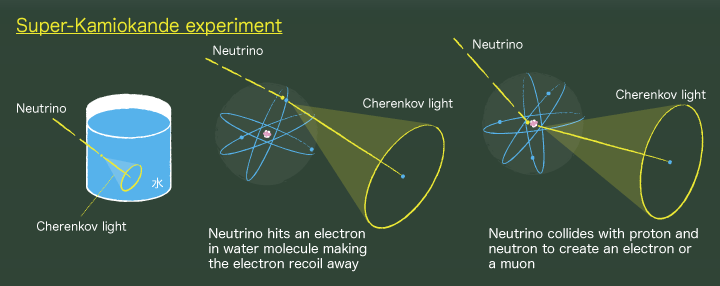
See the Super-Kamiokande official website for easy-to-understand information giving details about experiments at Super-Kamiokande.
Super-Kamiokande official website
Neutrino oscillations became a hot topic in the 2015 Nobel Prize in Physics
The 2015 Nobel Prize in Physics was awarded jointly to Professor Takaaki Kajita of the Institute for Cosmic Ray Research, University of Tokyo, and Professor Emeritus Arthur B. McDonald of Queen’s University in Canada for their discovery of neutrino oscillations that prove a neutrino has mass. Professors Kajita is the chief physicist for the Super-Kamiokande experiment and McDonald for the SNO experiment.
What is this neutrino oscillation phenomenon anyway? To explain, let’s follow the history of neutrino detection experiments.
Davis’s experiment that began in the late 1960’s involved observing neutrinos coming from the sun. Energy from the sun is thought to be produced by nuclear fusion reactions taking place in the center of the sun where helium nuclei are each formed from 4 protons. Since neutrinos are generated in the process of nuclear fusion, this theory of how the sun’s energy is produced will prove correct if neutrinos from the sun can be observed. Davis’s experiment successfully observed solar neutrinos, but the number of the solar neutrinos observed was only about one-third that predicted by the standard solar model. This deficit where the number of the solar neutrinos observed is less than that the theoretical prediction later came to be called the “solar neutrino problem.” Solar neutrinos were also observed in experiments at Kamiokande(*) which is the predecessor to Super-Kamiokande. The result was the same, showing that the number of the solar neutrinos observed was less than the theoretical prediction.
(*) Kamiokande experiments were performed under the supervision of Masatoshi Koshiba who is now a special honor professor at the University of Tokyo and former teacher of Professor Takaaki Kajita. On February 23, 1987, Kamiokande succeeded in detecting 11 neutrinos among those produced by a supernova explosion which occurred in the Large Magellanic Cloud located about 160,000 light-years away from our solar system. Based on this achievement, Masatoshi Koshiba was awarded the 2002 Nobel Prize in Physics. This opened up a new research field called “neutrino astronomy” and since then the science of studying neutrinos and exploring elementary particles has been making constant progress.
An assumption that neutrinos have mass
Neutrinos produced in the center of the sun are electron neutrinos, so the electron neutrinos detected in Davis’s experiment and the Kamiokande experiment were also observed as solar neutrinos. If some of these solar neutrinos change into other types of neutrinos before arriving at the Earth after being emitted from the center of the sun, then what happens? In Davis’s experiment, only electron neutrinos were detected, so the number of the electron neutrinos observed was less than the number predicted by the standard solar model to be produced in the sun’s center.
The Standard Model of elementary particles treated neutrinos as having zero mass. If neutrinos do have mass, then what happens? Theoretical studies revealed that if neutrinos have mass, then a phenomenon called “neutrino oscillation” occurs that causes neutrinos to periodically change their type while they are traveling to the Earth. More specifically, even if all neutrinos first produced from the sun are electron neutrinos, other neutrinos such as muon neutrinos and tau neutrinos are mixed in with them at a certain quantity, depending on the distance each neutrino has traveled through space. In this way, the quantity of electron neutrinos periodically decreases and returns to the initial state during their travel.
Succeeded in discovering neutrino oscillation in two experiments
After a number of years, neutrino oscillation was experimentally discovered by the Super-Kamiokande and SNO experiments. Super-Kamiokande observed the atmospheric neutrinos generated by the nuclear reaction caused by cosmic rays which are mainly protons that strike the atmosphere covering the Earth. Because neutrinos can easily penetrate through the Earth itself, the Super-Kamiokande detector captures not only the atmospheric neutrinos generated in the atmosphere directly above Super-Kamiokande that fall downward, but also the atmospheric neutrinos generated in the atmosphere on the opposite side of the Earth that fly upward through the Earth. These observation results showed that the number of upward muon neutrinos flying a longer distance from the opposite side of the Earth was apparently less than the number of the downward muon neutrinos. Meanwhile, the number of electron neutrinos did not change with the direction of travel, so this implies that some of the muon neutrinos flying from the opposite side of the Earth turned into tau neutrinos by neutrino oscillation before reaching the Super-Kamiokande detector. The results of this experiment were published in 1998.
The SNO experiment is able to detect not only electron neutrinos but also muon neutrinos and tau neutrinos transformed from electron neutrinos by neutrino oscillation. When solar neutrinos were observed by counting just the electron neutrinos and by also counting all neutrinos, the number of electron neutrinos was less than predicted by the theory, the same as found in results from other experiments. However, the total number of neutrinos of all types matched the theoretical prediction. In other words, the prediction by the standard solar model is correct and the reason why the number of solar neutrinos observed was less than predicted is that the electron neutrinos were turned into other types of neutrinos by neutrino oscillation. The first results of the SNO experiment were published in 2002.
Future approaches of neutrino research
Currently, in order to make a deeper study of neutrino oscillation, experiments are being carried out by using neutrinos (accelerator neutrinos) generated by a particle accelerator, in which the neutrinos are guided so as to travel a long distance and impinge on a neutrino experimental facility. At Super-Kamiokande, this experiment is underway to detect muon neutrinos generated in the proton accelerator constructed at Tokai Village, Ibaragi Prefecture, located about 295 kilometers away from Super-Kamiokande. Using artificial, known neutrinos, neutrino oscillation can be studied in more detail by investigating how much the number of the actually detected neutrinos has been reduced compared with the predicted number of neutrinos without neutrino oscillation or by detecting the electron neutrinos transformed from muon neutrinos.
What does the discovery of neutrino oscillation mean in particle physics? The Standard Model of particle physics assumed that neutrinos have no mass. However, neutrino oscillation occurs when neutrinos have mass and different types of neutrinos are mixed. This means the discovery of neutrino oscillation required extending the Standard Model to incorporate neutrino mass into its theory or constructing a new theory beyond the Standard Model. Neutrino oscillation was first theoretically discovered by a study that assumed neutrinos have mass, and when neutrino oscillation was next experimentally discovered, the need arose to construct a new theory. In this way, the repeated process of theories and experiments along with resulting discoveries in particle physics helps us gain a deeper understanding of what matter is composed of.
Photomultiplier tubes that capture neutrinos at Super-Kamiokande
Lastly, let me tell you about the photomultiplier tubes used in Super-Kamiokande. Currently, experiments and observations continue at Super-Kamiokande, so we cannot enter inside there or get a look inside the tank for the Super-Kamiokande detector. As mentioned earlier, a number of large-diameter (20 inches or about 50 centimeters) high-sensitivity photomultiplier tubes are installed in the tank to detect extremely faint Cherenkov light that may be only several tens of photons per photomultiplier tube. So even if we could look into the tank during the experiment, it would be hard to actually see this faint Cherenkov light with our eyes whose pupils are only about 7 millimeters in diameter. The same model as the photomultiplier tubes actually used in Super-Kamiokande is on exhibit at several facilities in Japan.
This photomultiplier tube playing the important role in neutrino research has been recognized as a state-of-the-art product with historical value, and was awarded an IEEE milestone in 2014. (This is an award to recognize significant achievements in electrical and electronic technology. In older times, the invention of the battery and the telephone were selected for this award. Inventions from Japan selected for this award include the Shinkansen bullet train and desktop calculator, etc.) If you find yourself in the neighborhood of any of the facilities listed below, how about stopping by to see this photomultiplier tube from up close, and think for a minute about all the neutrinos that are quietly travelling like ghosts in far distant space.
Facilities where 20-inch photomultiplier tubes are on exhibit in Japan
Road Station: SkyDome Kamioka(6, Yuhigaoka, Kamioka-cho, Hida City, Gifu Pref.)*Japanese
Hamamatsu Science Museum(256-3, Kitaterajima-cho, Naka-ku, Hamamatsu City, Shizuoka Pref.)*Japanese
Hamamatsu Municipal Johoku Library(2-37-2, Wajiyama, Naka-ku, Hamamatsu City, Shizuoka Pref.)*Japanese
Takayanagi Memorial Hall(3-5, Johoku, Naka-ku, Hamamatsu City, Shizuoka Pref.)*Japanese
National Museum of Nature and Science(7-20, Ueno Park, Daito-ku, Tokyo)
National Museum of Emerging Science and Innovation (Miraikan)(2-3-6, Aomi, Koto-ku, Tokyo)
Tamarokuto Science Center(5-10-64, Shibakubo-cho, Nishitokyo City, Tokyo)
Saitama Municipal Youth Astronomical Museum(2-3-45, Komaba, Urawa-ku, Saitama City, Saitama Pref.)*Japanese
Saga Pref. Space and Science Museum(16351, Nagashima, Takeo-cho, Takeo City, Saga Pref.)*Japanese
See the other articles in this category.
 Home > Photon lab. > “The Story of Particle Physics” by Mr. Ohsuka > Neutrinos
Home > Photon lab. > “The Story of Particle Physics” by Mr. Ohsuka > Neutrinos



